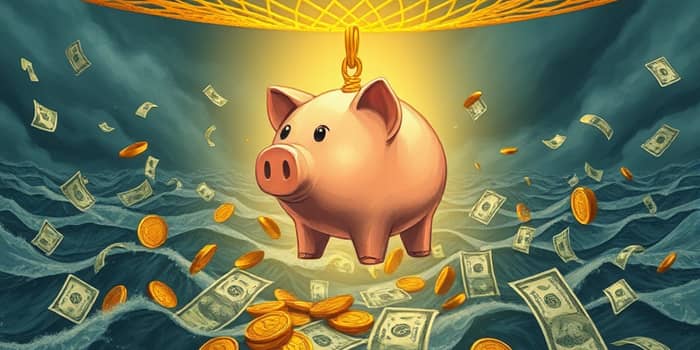
In an unpredictable world of sudden job changes, medical bills, and urgent repairs, having a financial cushion is not optional—it’s essential. An emergency fund acts as a financial lifeline, providing you with the stability and peace of mind to face life’s unexpected challenges.
An emergency fund is a dedicated savings account or cash reserve held specifically for unplanned expenses. This distinct fund should be highly liquid and accessible, allowing immediate withdrawal without penalties.
Unlike savings for planned goals—such as vacations or home improvements—an emergency fund is not to be touched for routine or anticipated purchases. Its sole purpose is to absorb the shock of sudden financial demands.
Building an emergency fund delivers more than just monetary value; it fosters lasting peace of mind and confidence. When bills arrive unexpectedly or your income stream falters, you can rely on this reserve instead of accumulating high-interest debt.
A well-funded emergency account also
preserves your long-term goals. Without it, you might be forced to tap into retirement savings or incur credit card debt at APRs above 22%, setting your progress back by years.
Determining the optimal fund size depends on your personal circumstances. Financial experts typically recommend the following targets:
To achieve these milestones, consider earmarking 5–10% of each paycheck and directing it automatically into your emergency account.
The true value of an emergency fund emerges in real-life crises. Whether faced with sudden unemployment or unexpected medical costs, having ready cash can be the difference between resilience and hardship.
More than 35% of Americans admit they couldn’t cover a $400 expense without borrowing or using credit cards. Relying on credit leads to high-interest credit cards and payday loans, trapping you in a cycle of debt.
Without a cash reserve, people often tap into retirement accounts, which can trigger penalties, tax liabilities, and the loss of future growth—undermining decades of careful planning.
Setting up and sustaining an emergency fund requires both strategy and discipline. Follow these steps to stay on track:
Where should I keep my emergency fund? Opt for high-yield savings or money market accounts that combine liquidity with competitive interest rates. For immediate access, a small portion in cash can also be kept on hand.
Is an emergency fund a substitute for insurance? No. While insurance covers specific risks, it often involves claim processing delays and deductibles. A cash reserve provides instant liquidity for urgent needs.
Can I invest my emergency fund? It’s best to keep it in low-risk, liquid vehicles. Investing in stocks or bonds may expose your fund to market volatility when you need it most.
Creating an emergency fund is a universal need—no one can predict life’s financial twists. Even starting with a small buffer generates momentum and builds long-term protection.
Make it a priority to allocate a portion of every paycheck until you reach your target. Keep your fund separate, monitor it regularly, and replenish it immediately after any withdrawal.
By taking these steps, you’ll transform financial uncertainty into a source of strength, ensuring you can face any challenge with confidence and composure.
References













